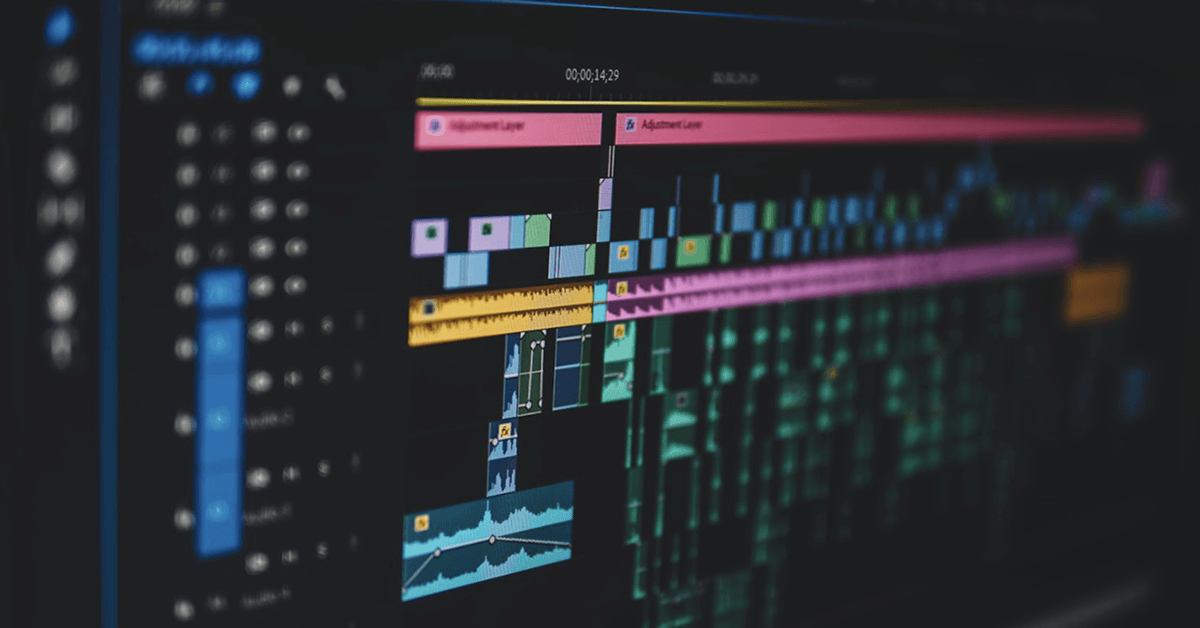The Importance of Sound Layering
In the real world, no sound exists in isolation. From the cacophony of noises on a busy city street to the subdued environment of a library, the soundscapes we live in are always made up of many layers of sound. That’s why audio layering is such a critical element of sound design – crafting rich sounds that immerse and excite your audience requires carefully blending different elements and textures.
Whether you’re editing backgrounds for a movie, designing dynamic video game sounds, or crafting short and punchy audio ads, layering is an essential skill to learn.
Two Ways to Think About Sound Layers
A “layer” is a broad term that can have multiple meanings in the context of sound editing. On one hand, every audio track you use could be considered an individual layer. But on the other hand, audio layers can also refer to separate elements such as ambience, Foley, and hard effects. Let’s explore these two different definitions:
Layering Sounds to Create Complex Effects
Individual sound effects are often made up of several layers, such as the smack of a punch accompanied by a beefy impact and the rustle of clothing. Each layer adds something important: the main layer of 'smack' is what you expect to hear when you see a punch on screen, the extra impact gives it a sense of weight and power, and the clothing Foley helps connect the sound to the character.
Building Background Ambience with Sound Layers
When you ‘zoom out’ from designing individual sound effects and look at the overall soundscape, you’ll notice that everything is composed of larger audio layers. Even quiet room tones often contain a few different layers, such as the low-level hum of an air conditioning system mingling with muted traffic outside.
Audio Layering in Media

Now, let’s get into the specifics of how to layer sound effects for maximum impact. Different types of media present different opportunities and challenges when it comes to sound design – for example, creating immersive settings and exciting action scenes in a movie requires a totally different approach than programming audio layers for a game or crafting the perfect 30-second ad spot to sell a product. Audio layering is even used in music production! Here are some tips for effective layering in various media.
Layering Sounds for Film
A film soundtrack is a bit like a painting. Think of each sound effect as a single brushstroke, each one made with a different pigment, a different type of brush, or a different technique. Painters use many layers of brush strokes to create compositions that draw the eye and communicate emotions while offering plenty of details to examine and interpret.
In a film soundtrack, the ambience layer is like a background color: it's not the focal point, but it fills the negative space and creates an overall mood or feeling for each scene. On top of that, carefully placed spot effects act like trees and mountains populating the landscape, adding context and visual interest to the composition.
Finally, there are the “subjects” of your painting: the roaring engines and squealing tires of a car chase or the ominous footsteps of a monster stalking its prey. These sounds communicate important information to the audience, and are often made up of multiple layers themselves.
Fortunately, mixing in surround and immersive formats gives you more room to layer sounds without crowding the mix. For example, when something important happens on screen, you can duck the ambience in the front channels to make space while keeping it audible in the surrounds. You can also spread big, multilayered sounds across the left, right, and center channels to give each layer more clarity.
Layering Sounds for Video Games
Unlike linear media, game audio is dynamic, meaning that the soundscape is constantly changing. Every action the player takes – and how the game responds – can potentially change the sounds you hear. From navigating menus to exploring immersive worlds, creating an immersive game soundtrack often requires many interactive audio layers.
If film soundtracks are like paintings, game soundtracks are more like interactive sculptures. You can look at them from different angles, manipulate the moving parts, and watch them react to the environment. The experience is different every time, and that's what makes the art form so engaging.
As a sculptor of game soundtracks, your job is to make sure that the various layers of sound are able to coexist in different combinations without competing for attention. Since you don’t have total control over the mix like you would in a film, careful use of sound layers becomes extremely important.
When designing sound effects for games, think about how the various audio layers will interact, and what potential conflicts there might be. For example, racing games usually have a background of constant engine noise, so the “lap completed” sound needs to be short, punchy, and high-pitched to stick out of the mix.
Layering Sounds for Commercials and Audio Ads
Going back to the art analogy, layering sound effects for advertising is more like doing graphic design than painting. In advertising, the goal isn’t so much to immerse the viewer in a rich and detailed world, but to establish a feeling quickly and communicate information in an effective and memorable way.
To achieve this, try to think like a graphic designer. Make sure every layer of sound has a defined purpose such as grabbing attention, establishing the tone of the ad, conveying information, or reinforcing brand identity. Any track that doesn't achieve one of these goals is unnecessary clutter that can potentially distract from the message.
Timing is especially important when it comes to layering sounds for commercials. Depending on where your ad is shown, you might have as little as four seconds or as long as a minute to get your message across. As a result, different commercial formats require different approaches to audio layering.
For example, most pre-roll ads on YouTube can be skipped after four seconds, meaning you'll probably want to start off with a rich, layered sound before the viewer can click 'Skip'. But in a 30- or 60-second TV ad, you can use audio layers more subtly, such as the calm beach waves that underpins most Corona commercials.
Ready to start designing your own sounds? Start here:
Layering sound effects is an essential sound design skill, but that doesn’t mean that it's effective 100% of the time. Stacking too many different sounds or mixing multiple sounds with overlapping frequencies can actually make your sound design less effective. In fact, sometimes it can actually be best to use one sound instead of a second layer. Here are a few common mistakes to avoid.
It’s easy to get carried away with sound design. (We’ve all been there, haven’t we?) When you’re creating complex, layered sound effects, you might find yourself throwing a lot of ideas into your DAW to see what sticks – and before you know it, you’ve got a mess of tracks cluttering up your mix.
When you find yourself using more than 3-5 audio files to create one sound, stop and listen critically while muting each layer one by one. You’ll likely find at least one track that doesn’t need to be there. Cutting some of this clutter will free up sonic space and allow each layer to serve its purpose effectively.
Layering audio typically works best when you mix sounds that compliment each other, and that means balancing frequencies. The audible spectrum is usually divided into low, low-mid, midrange, high-mid, and high frequencies; and when multiple tracks overlap too much in one of these areas, it can create a phenomenon called masking that prevents you from hearing either one clearly.
For instance, stacking three different bass rumbles won’t necessarily make the finished product sound any bigger – in fact, using similar sounds like this can make the result sound 'muddy' and indistinct. Similarly, layering a high-pitched windchime track over a background of birdsong and rustling leaves in a garden scene can create a harsh, irritating effect instead of a peaceful feeling.
To avoid frequency masking and clashing, try using unique sound layers that are focused in different frequency ranges. For example, you can build a more calming garden ambience by using a lower-pitched windchime sound to compliment the birdsong, and replace the rustling leaves with distant buzzing insects. This way, each layer adds a unique texture without cluttering the mix.
Most of the time, adding layers makes the final sound more interesting, impactful, or immersive; but there are certain situations where sound layering can be detrimental. That's why it’s important to consider whether each new layer you add will help or hinder your audio storytelling.
Say you’re working on a scene where a car zooms past two characters as they talk, briefly startling them. It might be tempting to design a multilayered passby with an exaggerated whoosh and a big engine rev – but if the car isn’t meant to be the focus of the scene, you likely don’t need to do all that. Instead, try searching for a more plain, realistic car by that fits the scene without distracting too much.
Restraint can be a tough lesson to learn, especially for novice sound designers who are excited to practice and show off new techniques every chance they get. But listening is just as important as editing, and the more experience you get, the more carefully you'll consider adding additional layers.
Sound layering is a fundamental production technique that every sound designer should learn, but this blog only scratches the surface. To learn more, check out some of these resources from the PSE blog and YouTube channel:














